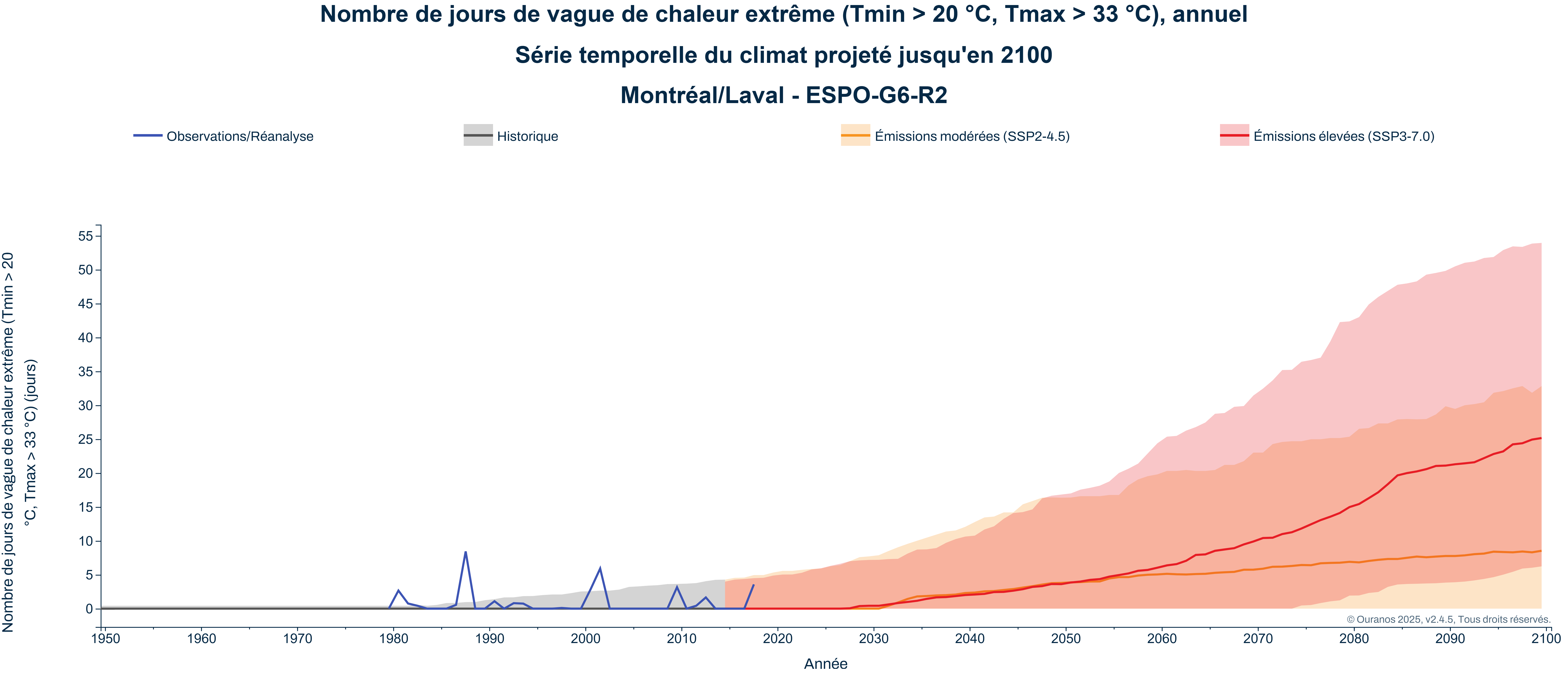Heat waves
Climate projections suggest that periods of extreme heat, hot nights and heat waves will become more intense, last longer, and occur more frequently in the future, both in Quebec and the rest of the world. Along with this change, the maximum temperature reached on the hottest day of the year is expected to increase significantly.
A number of climate indicators relating to heat are available on:
In 2050, 4 days of heat waves are to be expected on average in the Montréal and Laval regions ; this figure is nevertheless a median value.
Rarer conditions (1 in 10 years) could cause 17 extreme heatwave days annually. Values in 2050 differ little whatever the greenhouse gas emissions scenario.
By 2100, 8 heatwave days per year could be experienced by these regions, according to the moderate emissions scenario, while the high emissions scenario predicts 25.
By this time, the rarer conditions (1 in 10 years) can reach 33 to 54 days of extreme heat waves annually.

Figure 2 : Change in the annual number of extreme heat wave days for the Montréal and Laval regions between 1950 and 2100. In terms of public health, for the regions of Montréal and Laval, the maximum and minimum temperature threshold values are 33°C and 20°C respectively. The part on the left (in gray) shows the recent climate, based on observations. The right-hand side shows the projected climate. SSP2-4.5 is a moderate GHG emissions scenario; SSP3-7.0 is a high emissions scenario. From the Ouranos Climate Portraits based on ESPO-G6-R2.
Combined events
Globally, heat waves and droughts have become more frequent and this trend will continue in the context of climate change. The co-occurrence of these extreme events also has significant impacts on agricultural production and ecosystems, in particular through their combined effects leading to increased tree and crop mortality.
The conditions generated by simultaneous episodes of drought and extreme heat also favour forest fires.